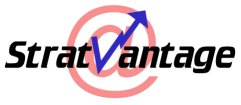|


Be on the wave or under it™
The News – 03/19/01
|
In this Issue:
|
Recommended Reading
|
|
|
I realize this is the only
newsletter you’ll ever need, but if you want more in-depth
detail, check out:
Stan Hustad’s The Coaching Connection
Management Signature's The
Express Read
|
The News – 03/19/01
NYSE Fines Online Brokerage for Bad Service
In early March, the New York Stock Exchange
levied a $225,000 fine and censured TD Waterhouse Investor Services
for failures in filling online stock orders and inadequate customer
service related to the outages.
Waterhouse, the second largest online broker,
was unable to process online customer orders on 33 different trade
days from November 1997 to last April. The Web site failures ranged
from 2 minutes to 1 hour and 51 minutes. The NYSE also said that
Waterhouse failed to handle the outages properly, resulting in
more than 20,000 customer complaints.
In February, online broker Charles Schwab was
forced to switch customers to a backup server due to database
problems. The Exchange has taken no action against Schwab as yet.
The NYSE’s decision to get tough on Waterhouse
indicates the importance of Web site performance for businesses.
If you are doing business on the Web, even if it’s only a small
percentage of your total revenue, you need to treat it with the
same care you’d treat your other channels. The Exchange decided
to fine Waterhouse more for the way they handled the outages than
for the outages themselves.
At this stage of the Internet’s development,
it is nowhere near the level of reliability of, say, the power
grid or the telephone system. These systems operate at “5 9s”
(99.999 percent uptime). That means they are down no more than
5 minutes a year. TD Waterhouse’s experience is probably
typical of large-scale business implementations on the Internet,
and it’s nowhere near 5 9s.
Thus it’s important if you’re offering services
over the Internet to negotiate a Service Level Agreement (SLA)
with your clients that specifies uptime, and, more importantly,
what happens when outages happen. There’s a good white paper on
SLAs on the Geneer
Web site if you’re interested.
ComputerWorld
Watch Out for Petabytes
This story has nothing to do with rabid dogs
or cranky felines. Rather, it’s about the next frontier of disk
storage – petabyte capacity. A recent Yankee Group study predicts
that, although it may take the average business a year to use
one terabyte of storage today, it will take only 30 days to use
the same capacity in 2002. A terabyte is 1,000 gigabytes and a
gigabyte is a billion bytes, or characters. A petabyte is 1,000
terabytes. It is common to be able to buy 30 to 80 gigabyte PC
hard drives these days. However, by 2003, it will take only a
day to use a terabyte of storage, and in 2004, just one tenth
of a day, the study said.
If your business is using 10 terabytes of storage
a day, you’d churn through 125 of those 80 gigabyte drives each
workday. So obviously, hard disk technology is going to need to
drastically improve – to the petabyte range. Higher drive capacities
are on the way, with 200 gigabyte drives slated to hit the market
by the end of the year. And British disk vendor Keele High Density
claims to be able to fit 11 terabytes in a credit card sized device
within the next two years.
All this is great,
but what will you be doing in a few years to require all this
storage? Today a single 40 gigabyte disk drive can hold either:
- the text from a stack of
paper 2,000 feet high
- 27 days of CD-quality MP3
songs
- 3 hours of digital video
- 10 DVD movies, in MPEG-2
format
There are a few applications
that could drive petabytes of volume.
First, network teleconferencing
will improve. Rather than running in postage-stamp-sized windows
on your screen, virtual meetings will fill your screen, requiring
lots of bandwidth. Chances are good you’ll want to save records
of important virtual conferences, and that will take a lot of
storage.
Another disk hogging
application will be the intelligent supply chain. Today companies
are beginning to put into place the means to take information
from the factory floor and make it available throughout the enterprise
and to supply chain partners. In turn, your supply chain partners
(retailers, logistics firms, warehouses) will share their data
to you. (For an indication on how this may go, see my white
paper, Taking Control of the B2B Exchange: What's Next
in the Supply Chain Evolution.) While it’s certainly true
that nobody will ever have the time to examine in detail all this
information, there is no question it will all be rolled up into
sophisticated decision support applications. Thus, all this tremendously
valuable data will be stored in giant data warehouses, and they’re
going to need a lot of disk space.
Finally, the traditional
network killer app, email, will continue to grow. (I doubt any
of you would predict a decrease in the amount of email
over the next four years.) This growth will present a variety
of challenges (like how will you survive being inundated with
hundreds of emails a day). But there’s a good chance that one
of the challenges will be where to put it all. If your company
doesn’t have an email retirement plan in which you destroy all
email records over a certain age, this very newsletter could be
enshrined somewhere on your network in 2004, taking up space.
So what can you do
now? Whenever you buy a computer, or especially a server, get
the largest hard drive available. Look into using a Storage Service
Provider (SSP), a company that provides storage you can use over
the Internet. Or you can outsource your applications to an Application
Service Provider (ASP) and let them worry about it.
TechWeb
Briefly Noted
- Shameless Self-Promotion Dept.: StratVantage
has launched a new service, CTOMentor™, designed to allow Chief
Technology Officers and other technical leaders to get rid of
the Guilt Stack, that pile of magazines you’ll get around to
reading someday.
CTOMentor is a subscription advisory service tailored to customers’
industry and personal information needs. Four times a year CTOMentor
provides a four-hour briefing for subscribers and their staffs
on the most important emerging technology trends that could
affect their businesses. As part of the service, subscribers
also get a weekly email newsletter, Just the Right Stuff™,
containing links to the Top 10 Must Read articles needed to
stay current. These and other CTOMentor services will let you
Burn Your Inbox™.
As part of its launch, CTOMentor is offering a two-part white
paper on peer-to-peer technology: Peer-to-Peer Computing
and Business Networks: More Than Meets the Ear. Part 1,
What is P2P?, is available for free on the CTOMentor
Web site.
Part 2, How Are Businesses Using P2P?, is available for $50.
CTOMentor
Return to Mike’s
Take
|






